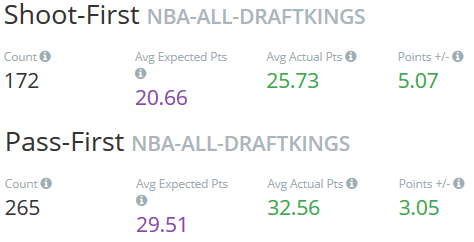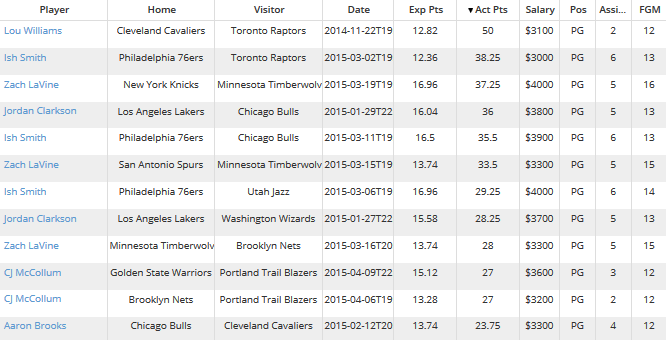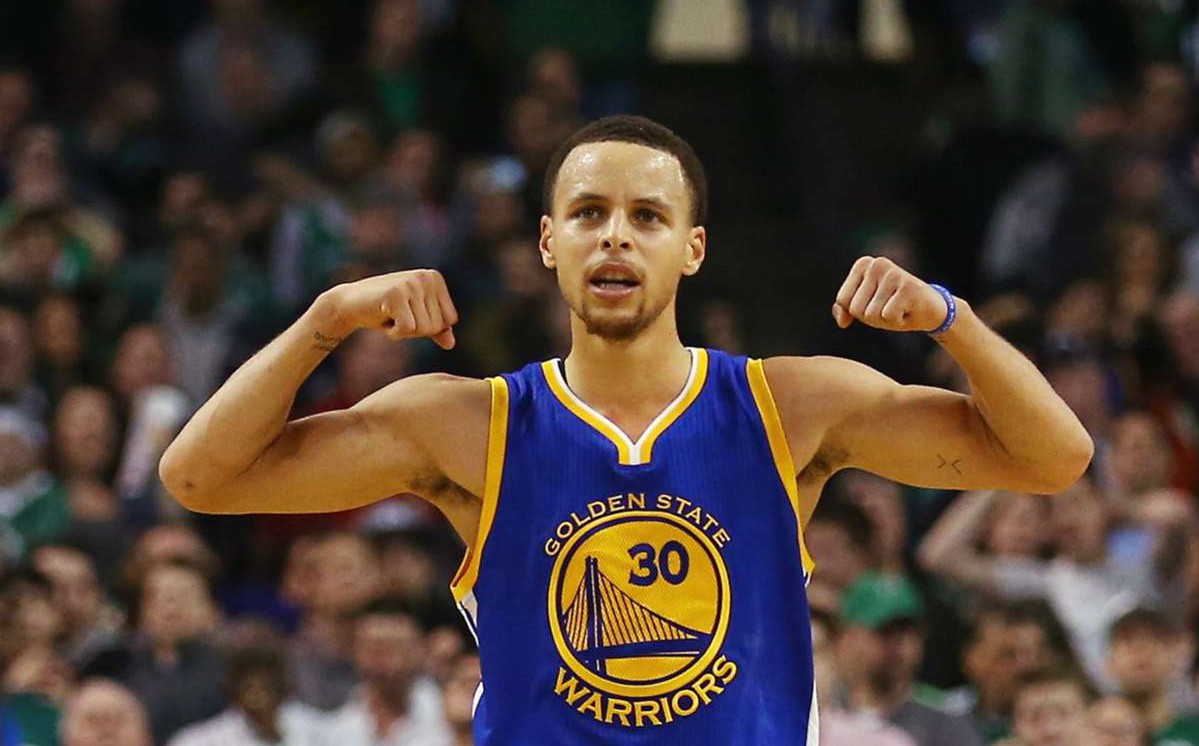We’ve recently looked at the stability of the point guard position in NBA DFS, but today, I want to get a little more specific. Player strengths and weaknesses vary, but I’m going to broadly group point guards into two groups – pass first guards and shoot first guards so we can look at where each excels. Here are the parameters I’ve set:
- Pass-first: 7+ assists, under 12 field goal attempts per game entering contest
- Shoot-first: Under 7 assists per game entering contest, over 12 field goal attempts
The first thing I found interesting was that pass-first point guards provided steadier value regardless of whether their team was favored or the underdog in the matchup:
While there was a larger split evident with shoot-first point guards. The shoot-first point guards performed marginally better when their team was the underdog and noticeably worse when the team was favored compared to the first group.
Looking more closely at the results, although the second group had a higher Plus/Minus when playing as the underdog, they averaged fewer raw points. This suggests the players in this group generally command a lower salary on DraftKings. So I took that idea a little bit further. Here are the results for the same categories, but this time, I restricted the result set to a maximum DraftKings salary of $6000:
Interestingly, the gap between Plus/Minus and actual points is getting EVEN WIDER, suggesting that there is probably a ton of value being generated from really cheap shoot-first point guards. When I look at the individual results, there are quite a few sub-$4000 point guards that just smashed value:
Cheap guards don’t always perform well, but I think the “Favorite vs Underdog” is a big part of it. As Bryan referenced in his last article, a lot of times, Vegas lines are influenced by who is or isn’t in the lineup.
Take last year’s Thunder for example – with KD, Westbrook, and Ibaka in the lineup, they’re probably going to be favored against the Grizzlies. Without one or more of the first two in the lineup, Memphis is probably favored. That makes all the difference in the world for someone like Dion Waiters. This is an obvious example, but it’s not always so black and white. These types of point guards are probably inherently more risky – if their shot isn’t falling on a given night, there’s a very real chance you’re getting single digit points from that position.
This next part is more speculation than anything, so feel free to offer a counter-point. From looking at the results, it seems to make sense that when a score-first point guard’s team is favored they do worse, relatively speaking, because the team doesn’t have to depend on their individual scoring as much. In other words, is it a better thing for the Hawks if Jeff Teague scores 30 points or is it better if Teague, Horford, Millsap, and Korver are all around 17, 18? Are the Cavs better off if Kyrie goes for 40 or is a more even distribution to include LeBron and Love better?
Overall, if you’re going cheap PG, your best option is going to go with a score-first guy whose team is an underdog. In terms of safety, the pass-first PGs were a little more stable and a little less susceptible to individual matchups.









